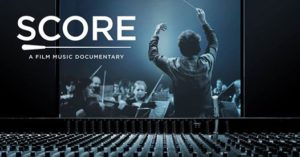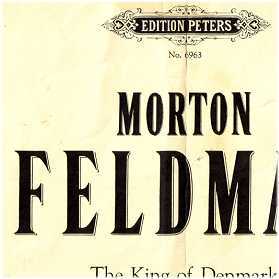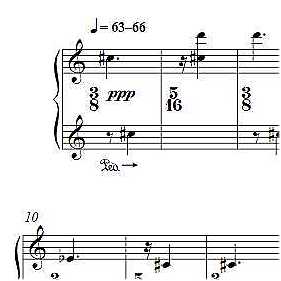
Ein ziemlich ramponiertes Piano steht irgendwo auf einem Hügel bei Malibu. Über hunderte von Metern sind Drähte zwischen dem Piano und einigen Wassertanks in der Umgebung gespannt. Wer auf dem Klavier spielt, erlebt dadurch einen Sound, der nicht nur vom Instrument selbst stammt, sondern auch bestimmt wird durch den Hall in den Tanks, mitschwingende zeitverzögerte Resonanzen und den Wind, der den Draht ins Schwingen bringt.
Das ist die Eröffnungsszene von SCORE, einem Film über Filmmusik. Der CBS-Newsjournalist Matt Schrader startete das Projekt aus Spaß am Thema mit einer Handvoll interessierter Freunde, mittels Kickstarter sollten 40.000 Dollar beschafft werden, 120.000 kamen am Ende zusammen.
Schon die allerersten Stummfilme wurden nicht ohne Musikbegleitung gezeigt, vorrangig, um die Geräusche der Projektionsmaschine zu überdecken. Und schon wenig später, nachdem der Film aus den Jahrmarktszelten aus- und in Kinos eingezogen war, wurden phantastische Orgeln zur Begleitung gebaut. SCORE zeigt ein wunderschönes Exemplar — was mich mit einer Träne im Knopfloch daran erinnert, dass in Downtown Pittsburgh ein altes Kino existiert, welches zu einem Einkaufszentrum umgewidmet wurde, als solches pleite gegangen ist und nun seit vielen Jahren leersteht, das ein solches Instrument noch besitzen soll:

Ob es noch funktionsfähig wäre — wer weiß. Überprüfen kann man das leider nicht, das Gebäude ist nicht zugänglich.
Der erste voll orchestrierte Soundtrack für einen Tonfilm wird hier Max Steiner zugeschrieben: für King Kong von 1933. Das dürfte stimmen, auch wenn es orchestrale Soundtracks für Stummfilme ntürlich längst vorher gab; es sei hier nur an Gottfried Huppertz‘ phantastische Kompositionen für Fritz Langs Nibelungen und Metropolis erinnert, die als sinfonische Werke durchaus sogar für sich stehen könnten. Bekannte und weniger bekannte Filmkoponisten — Danny Elfman, John Williams, Howard Shore, Hans Zimmer, Alexandre Desplat u.a. — werden interviewt; mit vermutlich viel Mühe hat man sogar eine Komponistin gefunden, die mir leider völlig unbekannte Rachel Portman. Sie bestätigen sich gegenseitig, wie einmalig und wichtig sie sind, darüber hinaus verraten sie nicht viel. Viele andere Komponisten — Jerry Goldsmith, John Barry, Trent Reznor, Ennio Morricone, Bernard Herrman u.a.a. — werden anhand markanter, meist aber leider nur sehr kurzer Ausschnitte vorgestellt und ihre spezifischen Eigenheiten analysiert.
SCORE geht anhand dieser Komponisten diverse Aspekte der Filmkomposition systematisch durch, wobei auch Filmhistoriker (u.a. Leonard Maltin), eine Musikpsychologin (Siu-Lan Tan), die Regisseure James Cameron, Steven Spielberg, George Lucas, Garry Marshall und Christopher Nolan sowie Musiker wie Quincy Jones und Moby ihren Teil zum Gesamtbild beitragen. Sehr plastisch wird am Beispiel Lord of the Rings die Funktion von Leitmotiven gezeigt (die bei mir noch immer eine Gänsehaut auslösen), dazu werden verschiedene Orchestrierungsstile, Ensemblebesetzungen, ungewöhnliche Instrumentierungen, Popmusik, elektronische Klänge, Mickey Mousing (auch wenn es hier nicht so genannt wird) demonstriert. Gelegentlich wird das allerdings ein wenig platt. Hans Zimmers Dreh etwa, den gesamten Streicherapparat des Orchesters als Rhythmusgruppe einzusetzen, ist nun wirklich nicht neu, auch wenn er ihn exzellent beherrscht. Vielleicht würde man auch gern erfahren, weshalb bei John Williams seit Star Wars anscheinend jede Musik zur Marschmusik gerinnt (Ausnahme: Schindler’s List — die ist ihm wirklich gelungen), aber das erfahren wir nicht. Dafür werden andere Dinge gezeigt. Etwa, dass Filmmusiken ihre Wirkung auch daraus beziehen können, dass Instrumente eingesetzt werden, die eigentlich nicht in das Genre passen, etwa eine E-Gitarre in einem Western, das wird anhand von Ennio Morricones Musik zu The Good, the Bad and the Ugly demonstriert. Wir erfahren auch, wie die Musik sogar steuern kann, welche Bildausschnitte der Zuschauer wahrnimmt und welche er ignoriert. Von Atmosphären natürlich nicht zu reden. Zimmers Schlussmusik in Inception lässt wirklich einen neuen Tag anbrechen, E.T.’s Abschiedsmusik treibt einem selbst dann die Tränen in die Augen, wenn man den Film gar nicht kennt. Speziell interessant ist auch eine Szene in SCORE, die zeigt, wie eine Filmmusik (ich meine, sie stammt aus Titanic, bin mir aber nicht sicher) wirken kann, wenn sie aus dem Filmkontext herausgenommen wird: In voller Lautstärke im Anschluss an Barack Obamas Amtsantrittsrede ins Publikum gedonnert erzeugt sie eine Aufbruchstimmung, die fast schon zu Tränen rührt. Was seltsamerweise in SCORE fehlt, ist der Klassiker, den jeder Gemeinschaftskundelehrer draufhat: einen bestimmten Filmausschnitt mit verschiedenen Musiken zu zeigen
Aber auch scheinbare Nebengleise, etwa die Arbeits- und Denkweise der zumeist klassisch ausgebildeten Orchestermusiker in der Filmmusikproduktion werden vorgestellt — fast alle diese Leute sind „sightreading musicians“, sie können ohne Probe sofort vom Blatt spielen. Hans Zimmer äußert die wohl korrekte Vermutung, dass viele klassische Orchester nur noch existieren, weil sie für Filmmusiken eingesetzt werden. Nach wie vor spielen auch Arrangeure eine große Rolle, die jedes einzelne Orchesterinstrument genau kennen müssen. Auch die Aufnahmestudios werden noch immer nach ihren klanglichen Gegebenheiten ausgewählt (unter die Lupe genommen hier an den Londoner Beispielen A.I.R. und Abbey Road Studios). Und ein paar nette Anekdoten gibt es als Zugabe — etwa jene über Alfred Newman: Er schrieb eine Fanfare, die für MGM bestimmt war, von dieser Firma aber abgelehnt wurde. Newman reichte sie dann an 20th Century Fox weiter — und sie wurde das vermutlich bekannteste akustische Signet der Welt.
Was der Film nicht zeigt: wie Filmmusik komponiert wird. Darüber verraten die befragten Komponisten nichts. Aber wie sollten sie auch? Man kann die eigentliche Kompositionsarbeit nicht zeigen. Statt dessen wird die Bernard Herrman zugeschriebene Binse „There’s only one rule: There are no rules“ bemüht. Ansonsten nähert sich der Film dieser Frage durch die Interaktion mit den Regisseuren. Wie weit eigentlich heute Filmkomposition ins Sounddesign übergeht, und ob das eine gute Entwicklung ist, wird nicht angeschnitten. Auch das zunehmende Problem der Komponisten mit sogenannten „Tempmusiken“ kommt nicht vor; mit Msiken also, die der Regisseur von CDs „vorläufig“ in den Film einbaut, um dem Komponisten zu zeigen, was er sich ungefähr vorstellt. Das Problem dabei ist, dass sich diese Musiken oft verselbständigen und der Komponist dann nur noch versuchen kann, dasselbe zu liefern, ohne zu klauen. Im guten Fall kann das allerdings auch dazu führen, dass die Tempmusik bleibt, weil sie sich als unschlagbar herausstellt — Beispiel: Stanley Kubricks 2001.
Bleibt noch darauf hinzuweisen, dass soeben auf DVD eine SCORE Vol. 2 veröffentlicht worden ist. Die DVD enthält einige der geführten Interviews in voller Länge. Außerdem gibt es die Interviews — in den USA jedenfalls — auch in Buchform.
Und blöderweise geht mir, seit ich gestern SCORE gesehen habe, dieses Signalmotiv aus Close Encounter of the Third Kind nicht mehr aus dem Kopf. Für Risiken und Nebenwirkungen kann also keine Verantwortung übernommen werden.
















































